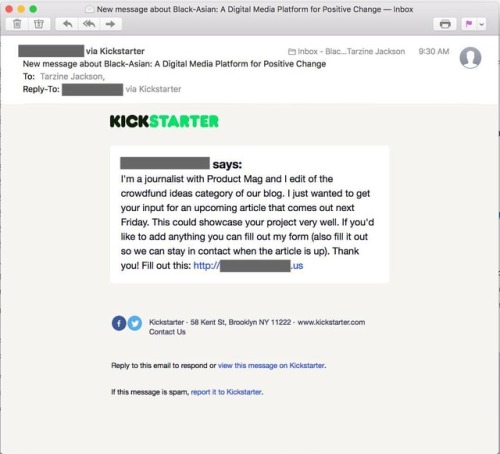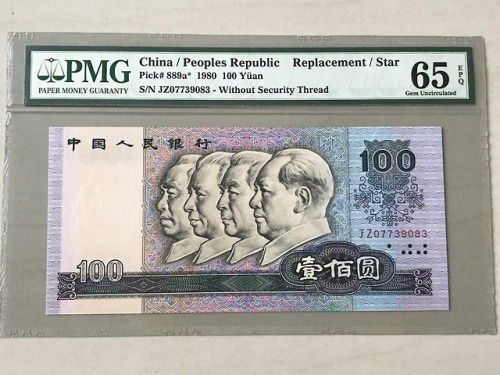#minorities
If a cis person, a straight person, a gamer, a white person, or a member of another non-oppressed group asks, “Where’s MY pride parade? Where’s MY special flag? Where’s MY exclusive club?” Then they must also ask…
“Where’s my fabric patch that my people were forced to wear on their clothing during the Holocaust?”
“Where are the laws that deny me being able to adopt children, marry my partner, or freely use the public bathroom that makes me feel safest?”
“Where are the politicians and religious figures that openly murder and imprison my people?”
If none of these questions make any sense in regard to their group, then perhaps they should next ask, “Why am I trivializing the traumatic history of oppressed people trying to survive in a world that violently tries to make them disappear?”
War Department Pamphlet, Army Talk, Number 170 [cover and page 24], 4/12/1947
This pamphlet discusses the Army’s position on Black soldiers; answers from surveys about Black soldiers; and discussion of other minorities.
File Unit: Segregation in Armed Forces [1947-49], 1946 - 1953
Transcription:
WAR DEPARTMENT, WASHINGTON 25 D. C.
12 APRIL 1947
ARMY TALK
[handwritten note p29]
[illustration of Black troops performing mechanical work]
170
Note to Discussion Leader:
This ARMY TALK consists of three parts:
Part I - Negro Manpower in the Army
Part II - Negro Platoons in Composite Rifle Companies - World War II Style
Part III - What About Minorities?
This Talk is designed for discussion on three separate days as directed in section
V, WD Circular 76, 1947.
Before conducting the series, the discussion leader should read carefully section
V, WD Circular 76, 1947 and WD Circular 124, 1946, which are reprinted on the
last pages of this Talk. Circular 124, 1946, gives the general provisions of a revised
Army policy about the use, training, organization, and assignment of Negro personnel,
together with a reprint of the approved Gillem Board Report upon which
the revised policy is based.
In Part I of the Talk stress should be laid upon the threefold objective of the
policy:
1. An immediate objective - a more varied use of the Army’s Negro manpower
than has been peacetime practice hitherto.
2. An ultimate objective - the effective use of all available manpower, should
war come again, without regard to antecedent or race.
3. An over-all objective - increasing the effectiveness of the Army.
In all the Talks it should be borne in mind that the discussion of “race” is likely to
touch off sparks from individuals who have deep-seated beliefs, convictions, or
prejudices in one direction or another. Such discussions, however, may be handled
constructively if the group is kept aware that while differences in personal opinion
are to be expected and respected, the basic purpose of the Troop Information
Program is to bring information to troops and to develop understanding through
discussion.
These Talks, then, should inform troops about War Department policy and stimulate
discussion.
Part One
NEGRO MANPOWER IN THE ARMY
How to use its manpower best is always one of the Army’s problems.
How to use its Negro manpower best is in some respects a special
problem. It is of significance to the entire Army. To this special
problem several factors contribute:
(1) The “general run” of Negro soldiers have had considerably less
civilian schooling than the “general run” of white troops; they are
much less likely to have had civilian training and experience in highly
skilled mechanical fields; they make much lower scores on the Army
General Classification Test.
[sidebar] The most effective use of its
Negro personnel is of concern
to the Army.
WD Circular 124, 1946, and section V, WD Circular 76, 1947, appear on the last pages of this TALK
[page 2]
How did the Axis method work? It was simple. Get your victim to squabble with his friends instead of with his enemies. Play on his fears and resentments to make him hate groups of his own people. Start him quarreling at home. Break down his unity and strength. Thus you’ll weaken him so much that you can destroy him easily. It’s just an application of the old story of the bundle of twigs: when tied together they can’t be broken, but separately they are easy. United, they win; divided, they fall.
It’s no secret now that Hitler hoped to crack the United States wide open by driving wedges between the many groups on our population as he had done in some of the countries of Europe. It’s no secret that Japan tried to make the war in the Pacific a race war, with every person whose skin was “darker” united in a holy war against every person whose skin was white. That neither of these attempts got to first base in the United States or in our fighting forces means that in a time of national crisis the ideas that held us together as a nation were stronger than the differences that might have divided us.
Even at that, although , a public opinion poll made at the height of the war revealed that 85 percent of our population accused one or more of the following American groups of profiting selfishly from the war:
Farmers
Negroes
Jews
Foreigners
Protestants
Catholics
Business Men
Labor Leaders
Working People
That’s a pretty big list, isn’t it? How many Americans can you think of who don’t fall into one of those groups?
[sidebar] But the dangers of serious group antagonism are always with us.
And now that the fighting is over, now that we are trying to get back to peacetime status, and especially when the almost sure-to-come economic troubles begin to show up, the tendency to break up into groups, to point fingers, and to build up resentment against minorities can set in strongly without any pressure from the outside. We do not wish to use the Axis method on ourselves.
STOP How do scientists describe attitudes toward minorities?
[sidebar] A scientific view of group attitudes:
Not long ago a number of scientists at an American university, studying the matter of group attitudes, developed a chart they called “A Continuum of Relationships Among Human Groups." [superscript 1] For "Continuum” in this discussion we can substitute the word “scale.”
This scale or chart of how groups feel and act toward each other ranged all the way from persecution at the bottom of the scale to cooperation at the top. And on the way up it listed such attitudes and acts as discrimination, prejudice, preference, tolerance, and respect, in that order.
———————
[superscript 1] From The ABC’s of Scapegoating, published by the Central YMCA College, Chicago 6, Ill.
24
Post link
Minorities in the Universe of Animation
Here’s some characters and 4 quick illustrations I made for an article as a college application, acabout inclusion of social minorities in cartoons.
Characters by order (1st board): Alê (Alexandre), Rafa (Rafaela), Pedro, Boo (Bruna), Lila, Jupi, Lin and Zayn.
2nd board: Lin (chinese), Pedro (latin) and Jupi (brazilian native);
3rd board: Lila (transgender), Zayn (arabian) and Rafa (Pedro’s twin);
4th board: Boo (doesn’t have a leg);
5th board: Alê (black)
oldie
Post link
Why the second movie is the biggest hurdle to becoming a filmmaker — especially for women and minorities
As first-time director, Anna Rose Holmer is in an elite group. Her movie, “The Fits,” about an 11-year-old tomboy trying to fit in, was one of the fewer than 1% of submitted featuresSundance Film Festival programmers chose last year, an acceptance rate tougher than that of an Ivy League college. She received some of the best reviews of the festival, and secured a distribution deal, a manager and an agent.
And yet, amid this success, Holmer, 31, now faces what is possibly the greatest barrier to a sustainable career as a filmmaker – her second movie.
Post link
The deportation of the Karachais began in the USSR on November 2, 1943, as a result, 69,267 people (15,980 families) were evicted. In total, during the pre-war and wartime, 79 thousand people of Karachai nationality were deported. Most of the repressed - more than 43 thousand people, including 22 thousand children - died on the road, as well as in places of resettlement. In modern Karachay-Cherkessia, November 2 is considered the day of deportation of the Karachai people. And May 3 is annually celebrated in Karachay-Cherkessia as the Day of the revival of the Karachai people.
“The idea of the project was to capture the faces, expressions of the eyes of people, to show that they are not broken, that they have returned, have preserved their customs and traditions,” the author of the project, Marika Khubiyeva, told the “Caucasian Knot” correspondent.
Source:https://www.kavkaz-uzel.eu/articles/341933/ © Caucasian Knot
Post link
Artwork for the Milwaukee Short Film Festival’s Voices Heard Program. The only Milwaukee showcase to feature filmmakers of color! ✊
Post link
On Disability and on Facebook? Uncle Sam Wants to Watch What You Post
First the surveillance state came for the terrorists, and I did not speak out—because I am not a terrorist.
Then it came for those who appear vagely Muslim, and I did not speak out— because I am not a Muslim.
Then it came for impoverished minorities and dissidents, and I did not speak out—because I am white and not a dissident.
And now, Trump and the Republican Party want to expand use of the surveillance state against people with disabilities.
I say this because a lot of Americans believe that the surveillance state–or a form of police state, for that matter–doesn’t exist in this country; that is a myth held by those fortunate enough to not be one of the millions of people who experience America as a surveillance state and/or a police state.
It is incumbent upon all of us to agitate against the further growth of the surveillance state not only for our own interest but for that of our brothers and sisters whose lives are adversely affected by its existence and perpetual growth.
#Gabor call themselves #tsigan meaning #Gypsy, not #Roma in #Transylvania: Between #tradition and modernity | #DW #Documentary (1:14) https://youtu.be/X36vOYlh6AQ?t=73
Another DW documentary on #landgrabbing in Ardeal or Erdely, 3 years ago: https://www.youtube.com/watch?v=UbLxyZm4jVk

A minority is only thought of as one when it constitutes some kind of threat to the majority. A real threat or an imagined one. And therein lies the fear. If the minority is somehow invisible, then the fear is much greater. That fear is why the minority is persecuted. So, you see there always is a cause. The cause is fear. Minorities are just people. People like us.
George, A Single Man (2009)

Back into the world.
When feminists complain about demographics and such it baffles me that middle class white women are somehow considered oppressed minorities.
Received this email this morning. #blackasianinc #change #kickstartercampaign #diveristy #supportblackasianinc #supportsmallbusiness #minorities #mixedraced
Post link
Here’s something I hear a lot, in many different contexts, and I hate it every time.
Someone who belongs to an oppressed minority group is speaking out against an act of oppression against their people. This person is justifiably angry and hurt about the things that have been said and done to their people. And in the process of expressing their anger and pain, this person says, “You know that terrible thing that you said about my people? You wouldn’t say that kind of terrible thing to THIS OTHER minority group! So don’t say it about us!”
I’m being deliberately vague here because I do not want this blog post to actually say any terrible bigoted things about anyone. But I encourage you to fill in the blanks for yourself, quietly in your head. You may have said or thought something like this yourself – “You wouldn’t say X terrible thing about Y group! So leave my group alone!”
I understand that the intent of a comment like this is to point out the absurdity of bigotry by comparing it to another kind of oppression. But here’s the problem: whenever someone says, “You wouldn’t say X terrible thing about Y group!” the answer is always, “Actually, people DO say that terrible thing about Y group.”
There is no minority group who is objectively better off than other minority groups. Unfortunately, there is no oppression that is “a thing of the past” and therefore totally okay to be invoked now. The bigots who say terrible thing about your people ARE, in fact, saying terrible things about other people. And when you say, “You wouldn’t say X terrible thing about Y group,” what you are saying is, “I don’t believe that Y group is oppressed. I neither understand nor care about what Y group is going through.”
Oppression comes in many forms. Every oppressed group experiences oppression in a different way. This only gets more complicated when you recognize that everyone is a combination of identities – you can be privileged in some ways and oppressed in others, and as a result, that experience of privilege or oppression is different. It is different, and it still exists.
This is not an easy thing to understand. The human brain craves for things to make sense, for things to happen for a logical reason. But bigotry doesn’t happen for a logical reason. Bigotry is objectively terrible, and humans are not very good at understanding things that are objectively terrible. You are naturally most likely to be able to see and understand the oppression that you and your group face. It is much more difficult for you, and for anyone, to comprehend the oppression that other groups face.
You will never completely understand what another group is going through, and they will never completely understand what your group is going through. It is useful to recognize this inability to understand – but we should be careful to NOT mistake that lack of understanding for reality.
Claiming that someone else does not experience oppression is not useful. It’s just using your own pain as an excuse to throw someone else under the bus. The goal should be ending all kinds of oppression, and we cannot achieve that by pretending that only one group is truly oppressed.
When you speak out against the oppression you face, by all means do so loudly and angrily. But it is entirely possible to do so without making light of another group’s suffering.

![War Department Pamphlet, Army Talk, Number 170 [cover and page 24], 4/12/1947This pamphlet discusses War Department Pamphlet, Army Talk, Number 170 [cover and page 24], 4/12/1947This pamphlet discusses](https://64.media.tumblr.com/a008781338adc9cdedd215ae00881eea/d166b24b0c160c9c-de/s500x750/03bff5cbf3522f7b7a67eb2374cf488d2118955b.png)
![War Department Pamphlet, Army Talk, Number 170 [cover and page 24], 4/12/1947This pamphlet discusses War Department Pamphlet, Army Talk, Number 170 [cover and page 24], 4/12/1947This pamphlet discusses](https://64.media.tumblr.com/ed92bfa5cd526e6240e8f722bcccbc45/d166b24b0c160c9c-02/s500x750/b39d14f69dccfef37e414189a5041215c189292d.png)

























